Adox IR-HR Pro 50 / HR-50 Without Speed Boost Film Review
Adox is an old company / brand. It was founded in 1860. It has since changed owners and been split, joined and all sorts of operations have happened. Good news is that Adox is once again making film for us to enjoy. If you want to learn more about the history of Adox I recommend starting from their own website.
My first experience with Adox was actually their parent company - Fotoimpex. Fotoimpex is an online store ( they also have a physical store in Germany ) that sells various analog products. I use them quite often and it's my favourite large, online analog gear store.
My experience with Adox, the film maker, was accidental. I had bought some bulk film and it included two rolls of Argenti Scale-X. What does that have to do with Adox? It's complicated. Might even be too complicated for me. In essence Argenti Scale-X is the same as Agfa Scala. Agfa doesn't exist anymore and instead Adox makes many of the films Agfa made ( part of Adox was sold to Agfa a long time ago ). The Adox version of Agfa Scala is Adox Scala 160. At least the version intended for processing as slides. If you want to shoot it as a negative then there is Adox Silvermax which is the same film. You can also shoot Scala 160 as negative film and Silvermax as slides. Because it's the same film. But don't quote me on any of this!
It's all very complicated. The short and simple version is: I shot a film that is like Adox Scala 160 and I liked it so wanted to try other films from Adox.
About IR-HR Pro 50

Adox IR-HR Pro 50 comes in a reusable film canister.
IR-HR Pro 50 is not a regular stock that Adox provides. It's based off of Adox HR-50. Or to make it more confusing - Adox HR-50 is actually based off of IR-HR Pro 50 - the film reviewed right here and right now. What?
Adox gets film that is intended for technical purposes. They apply special "Speed Boost" technology that allows the use of this technical film with ISO 50. At least that's what Adox says. See, IR-HR Pro 50 is sold as HR-50 without the "Speed Boost" technology. So IR-HR Pro 50 is the raw technical film that HR-50 is based off of. And this raw film itself can be shot at ISO 50. I'm not sure why the wording is as it is but I do believe that Adox makes changes to this raw film stock to make HR-50. Not sure what exactly the changes are. By looking at samples and charts they provide it looks like it's there to tame the strong contrast.
Whatever the backstory of the film is - it does exist. Film is super-panchromatic. It means that it sees the colors as we humans see it plus an extra bit in the infrared spectrum ( that's the "super" part ). It also is sold as having ultra fine grain.
The infrared visibility means that you can use this film for infrared photography. Documentation also mentions that it responds well to other color filtration.
Shooting & Developing Film
I won't be testing the infrared capabilities of this film in this review but most shots are taken through a dark red ( #29 ) filter. Most shots are also in sunny conditions.
One difficulty with using such a strong filter is that the low ISO of 50 needs to be reduced even more. Dark red filter requires you to add 3 more stops of light so that meant that I had to shoot at ISO 6. It's not a high ISO. I dislike tripods so I shot using wider apertures, slower shutter speeds and the power of sunny days. Keep this in mind as it means that some shots might be softer / less detailed. That's not because of the film though - it's because I'm a shaky old man with soft lenses when wide open.
After developing the first roll I noticed that the shots were slightly overexposed when using a red filter. So instead of adding 3 stops of light I added two which meant that I shot it as ISO 12 film. Non-filter pictures seemed well exposed when rated at ISO 50. My guess is that the extra infrared sensitivity helps when shooting in sunlight where there's typically a lot of infrared light being thrown around.
For development Adox recommends their own developer but it's possible to develop it with other developers. Which is what I did. I developed all rolls in Kodak HC-110 H dilution for 9 minutes. My agitation is to invert 4 times at the start of every minute. First roll came out very contrasty so I changed my agitation to two inversions at the start of every minute. Less agitation can tame strong contrast.
Film uses a very clear base that's also thinner than usual. It also attracts dirt quite a lot and likes to curl. It's not super curly but it can get difficult to handle depending on your scanning setup.
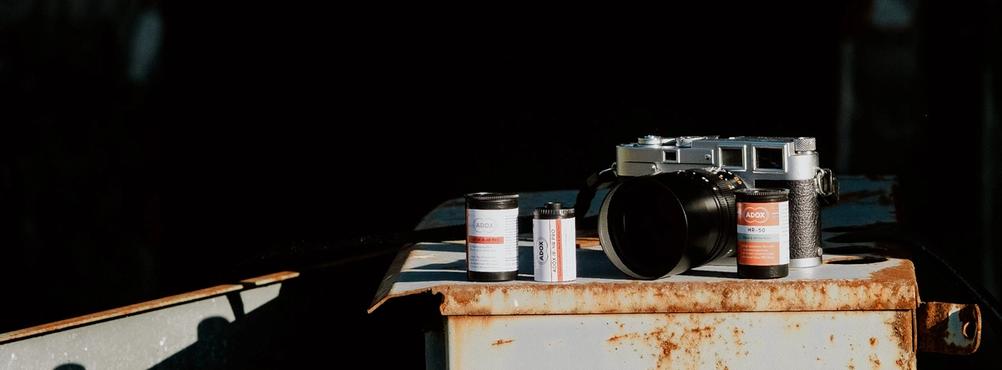
M3 shot all the IR-HR Pro 50 film. Various lenses were used. You can also see the regular HR-50 packaging on the right.
Results
Enough words. Let's have a look at some of the pictures taken on Adox IR-HR Pro 50 and see what conclusions we can draw.

- Camera
- Leica M3
- Lens
- Leica Summicron-M Pre-ASPH 90mm f2
- Film
- Adox IR-HR Pro 50 EI50
- Development
- Kodak HC-110; Dilution H ( 1:63 ); 9:00 minutes
- Scanner
- Reflecta ProScan 10T
It's not unexpected that an ISO 50 film can deliver fine grain and very detailed and sharp results. The red filter makes the blue sky darker which in turn makes the clouds more intense.
This film works really well for these types of photos. The strong contrast fits very well.

- Camera
- Leica M3
- Lens
- 7Artisans 50mm f1.1
- Film
- Adox IR-HR Pro 50 EI50
- Development
- Kodak HC-110; Dilution H ( 1:63 ); 9:00 minutes
- Scanner
- Reflecta ProScan 10T
Shots of sunny greenery through a red filter really resemble infrared photos. This is from the first film which had a slightly higher contrast and a bit of over-exposure.

- Camera
- Leica M3
- Lens
- Leica Summicron-M Pre-ASPH 90mm f2
- Film
- Adox IR-HR Pro 50 EI50
- Development
- Kodak HC-110; Dilution H ( 1:63 ); 9:00 minutes
- Scanner
- Reflecta ProScan 10T
People with light skin through a red filter gain a white chalk like skin.
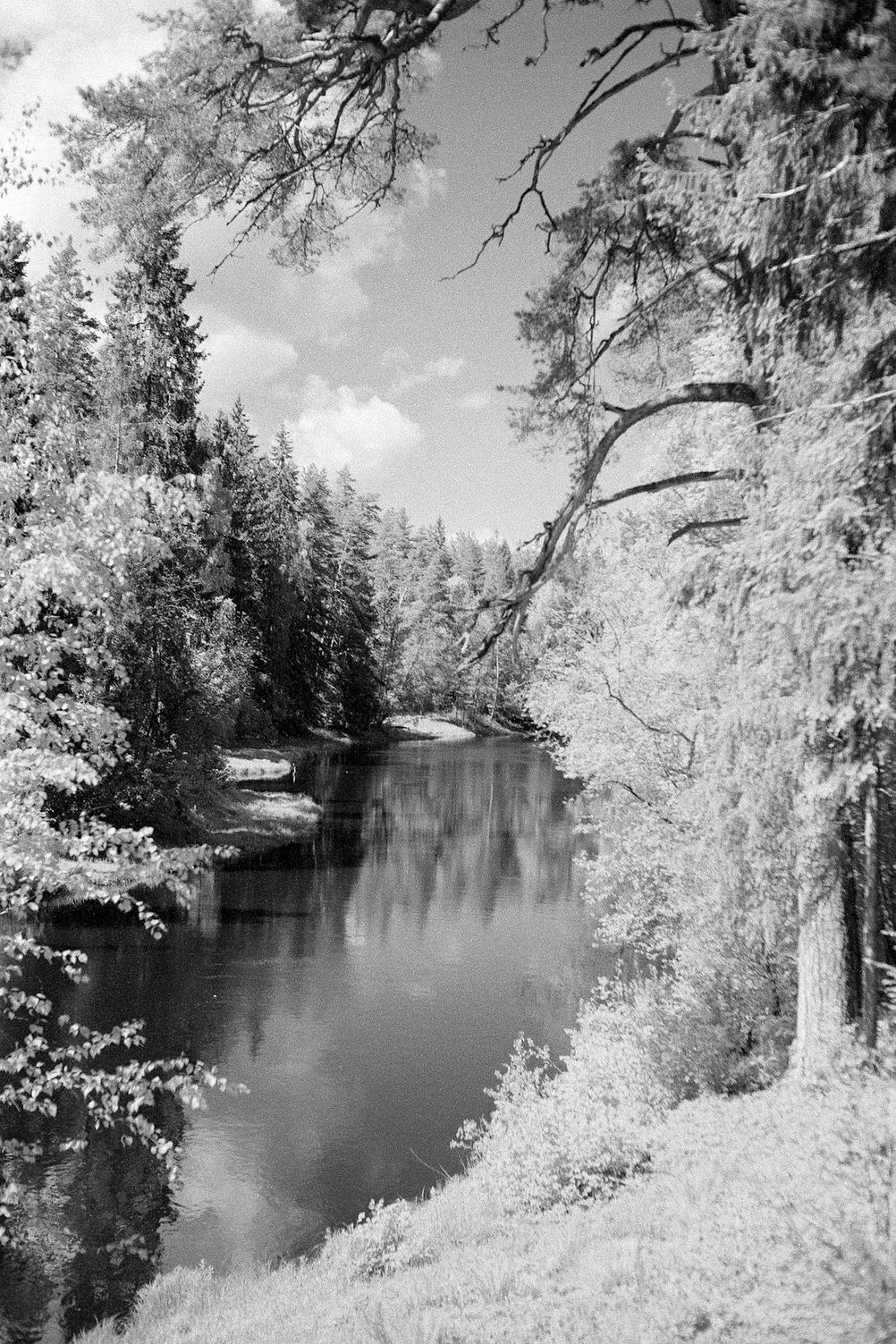
- Camera
- Leica M3
- Lens
- 7Artisans 50mm f1.1
- Film
- Adox IR-HR Pro 50 EI50
- Development
- Kodak HC-110; Dilution H ( 1:63 ); 9:00 minutes
- Scanner
- Reflecta ProScan 10T
Another example of the close-to-infrared like photo. It won't work for every scene. I'm not sure it works for this scene but it can make some ordinary scenes look less than ordinary.
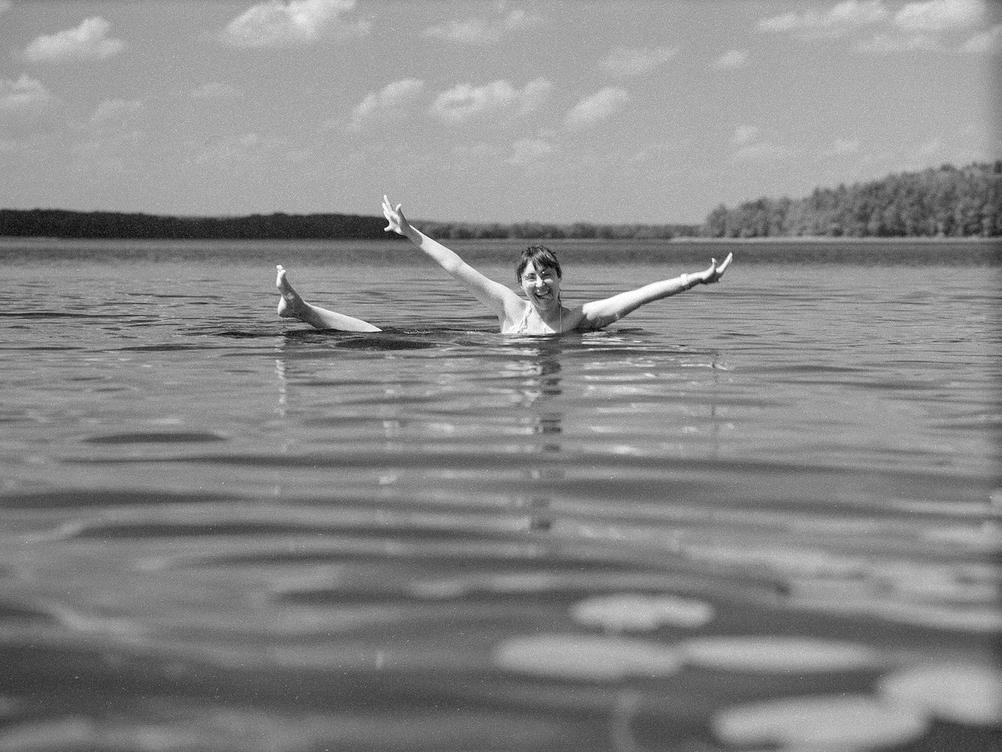
- Camera
- Leica M3
- Lens
- Leica Summicron-M Pre-ASPH 90mm f2
- Film
- Adox IR-HR Pro 50 EI50
- Development
- Kodak HC-110; Dilution H ( 1:63 ); 9:00 minutes
- Scanner
- Reflecta ProScan 10T
Goofy photos get that extra dimension when the person goofing around starts glowing white.
Red filter can help separating the light skinned human subject from the background.

- Camera
- Leica M3
- Lens
- 7Artisans 50mm f1.1
- Film
- Adox IR-HR Pro 50 EI50
- Development
- Kodak HC-110; Dilution H ( 1:63 ); 9:00 minutes
- Scanner
- Reflecta ProScan 10T
Even with ISO of 6 you can capture photos of your children. It only requires sunny weather and f1.4 ( or around that ). And an environment where your child subject is forced to move slower than usual.
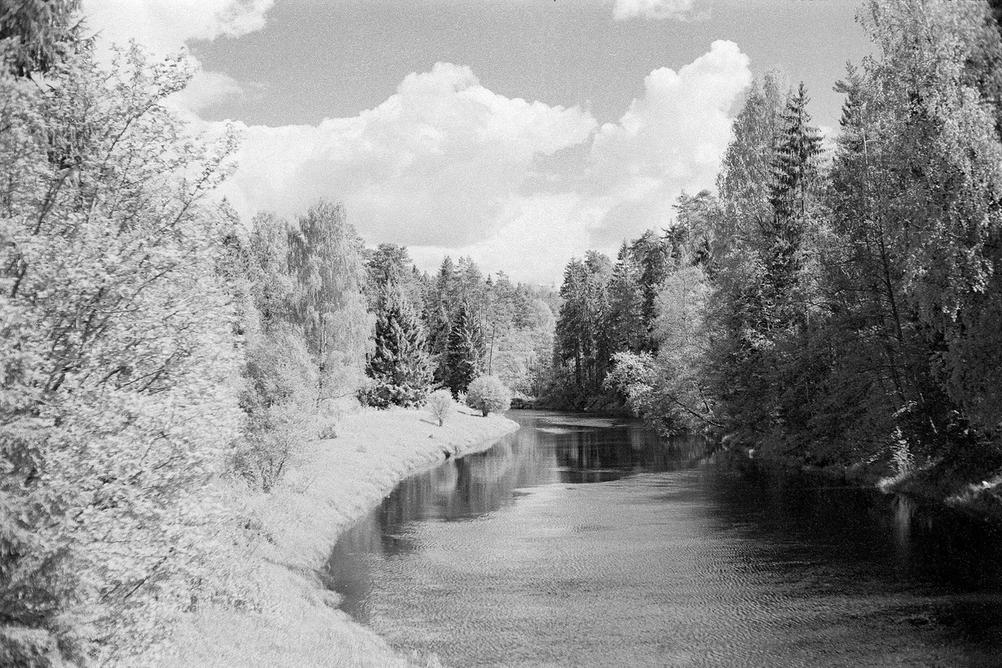
- Camera
- Leica M3
- Lens
- 7Artisans 50mm f1.1
- Film
- Adox IR-HR Pro 50 EI50
- Development
- Kodak HC-110; Dilution H ( 1:63 ); 9:00 minutes
- Scanner
- Reflecta ProScan 10T
One of the last infrared-like photos - I swear! It's very easy to blow the highlights. Highlights in this case is all the green stuff like leaves and grass.
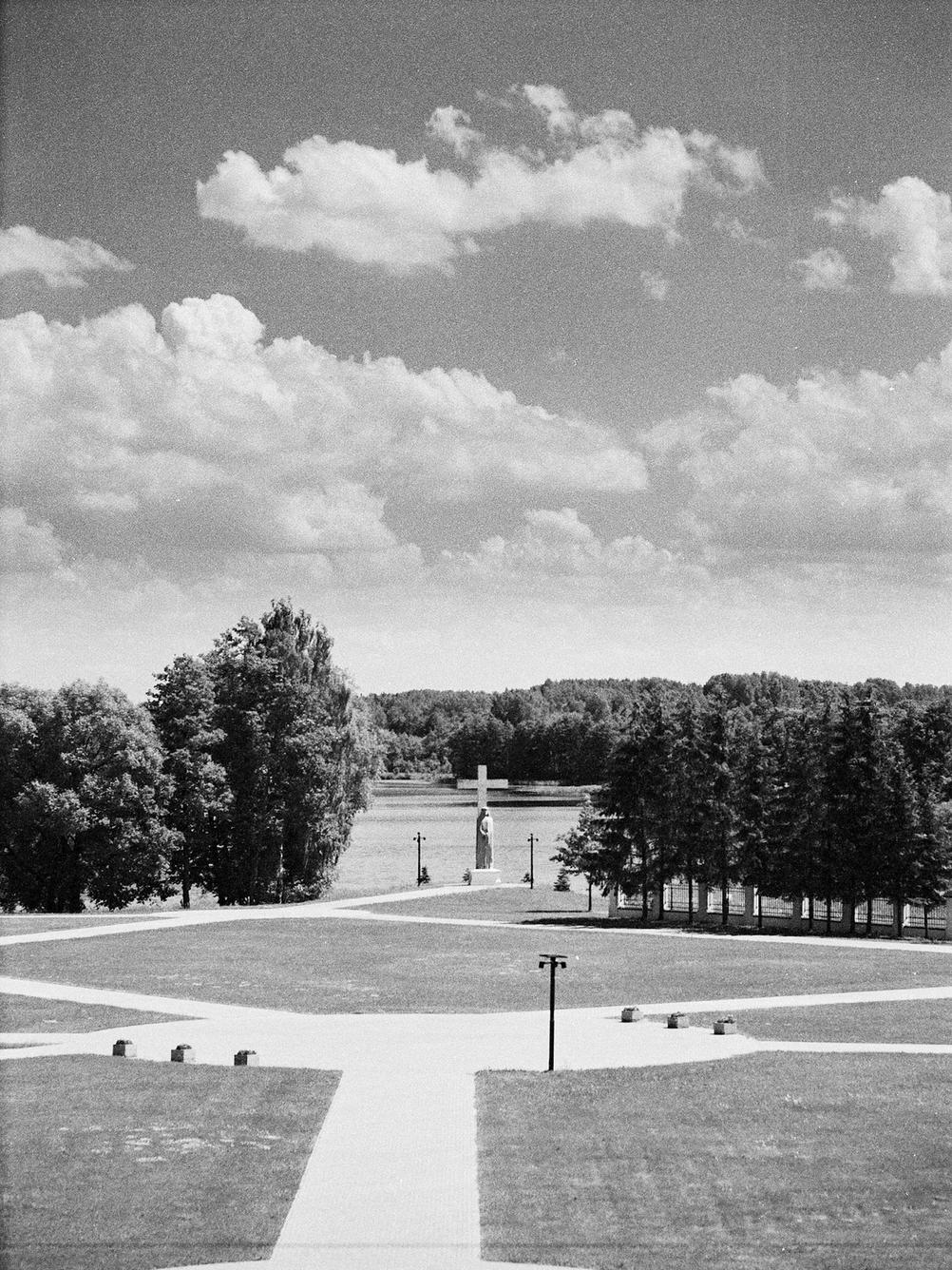
- Camera
- Leica M3
- Lens
- Leica Summicron-M Pre-ASPH 90mm f2
- Film
- Adox IR-HR Pro 50 EI50
- Development
- Kodak HC-110; Dilution H ( 1:63 ); 9:00 minutes
- Scanner
- Reflecta ProScan 10T
I had not used the red filter before much. And when I had - the results weren't impressive. Some of the blame goes to the weather I chose to use it on. Mostly overcast days won't deliver the best results from my experience.
With this film the effects are noticeable. You do get an even more increased contrast of an already contrasty film but if tamed then the look can be really nice to my eyes.

- Camera
- Leica M3
- Lens
- Leica Summicron-M Pre-ASPH 90mm f2
- Film
- Adox IR-HR Pro 50 EI50
- Development
- Kodak HC-110; Dilution H ( 1:63 ); 9:00 minutes
- Scanner
- Reflecta ProScan 10T
In harsh sunlight the contrast is insane. The middle gray almost doesn't exist. You get black and you get white. Luckily some mid-tones are maintained to keep the photo looking like photo.

- Camera
- Leica M3
- Lens
- 7Artisans 50mm f1.1
- Film
- Adox IR-HR Pro 50 EI50
- Development
- Kodak HC-110; Dilution H ( 1:63 ); 9:00 minutes
- Scanner
- Reflecta ProScan 10T
An example of a portrait-like photo. This is the ultimate way to take portraits if you hate fixing any blemishes. They all explode into white.
The face ( and skin in general ) gains this nice glow. I'm sure that the lens plays a part in it as well though.
If you like these type of dreamy portraits then a red filter and Adox IR-HR Pro 50 will be a great help. Keep in mind that the eyes will become almost pure dark so your subjects will look like demons. So either ask to keep the eyes closed or embrace the demons!
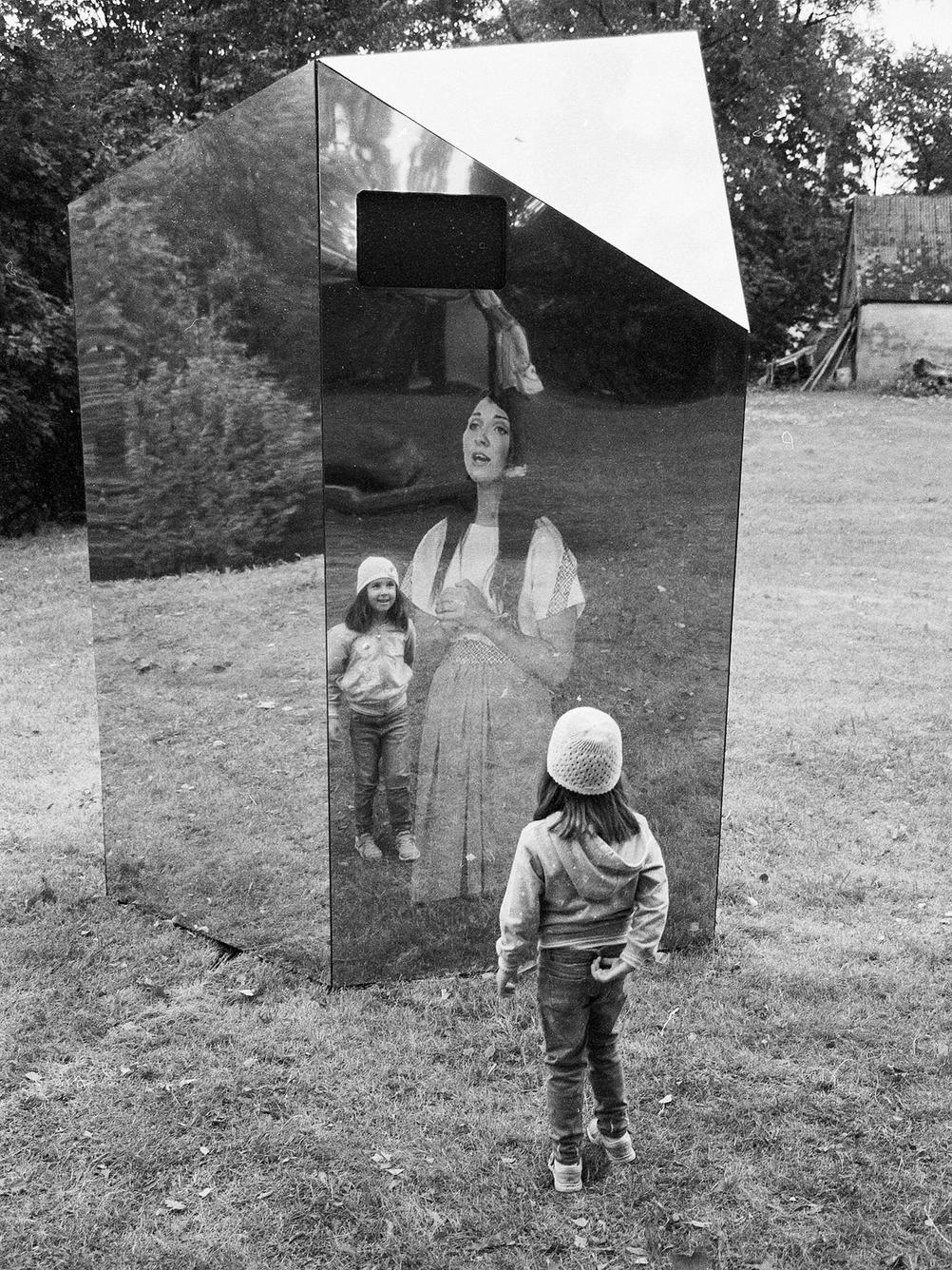
- Camera
- Leica M3
- Lens
- ZEISS Biogon T* ZM 35mm f2
- Film
- Adox IR-HR Pro 50 EI50
- Development
- Kodak HC-110; Dilution H ( 1:63 ); 9:00 minutes
- Scanner
- Reflecta ProScan 10T
This shot was taken without a red filter. The film has a different but similar character then. It's still contrasty but there are a lot more mid-tones.
Also - does this scene confuse you?
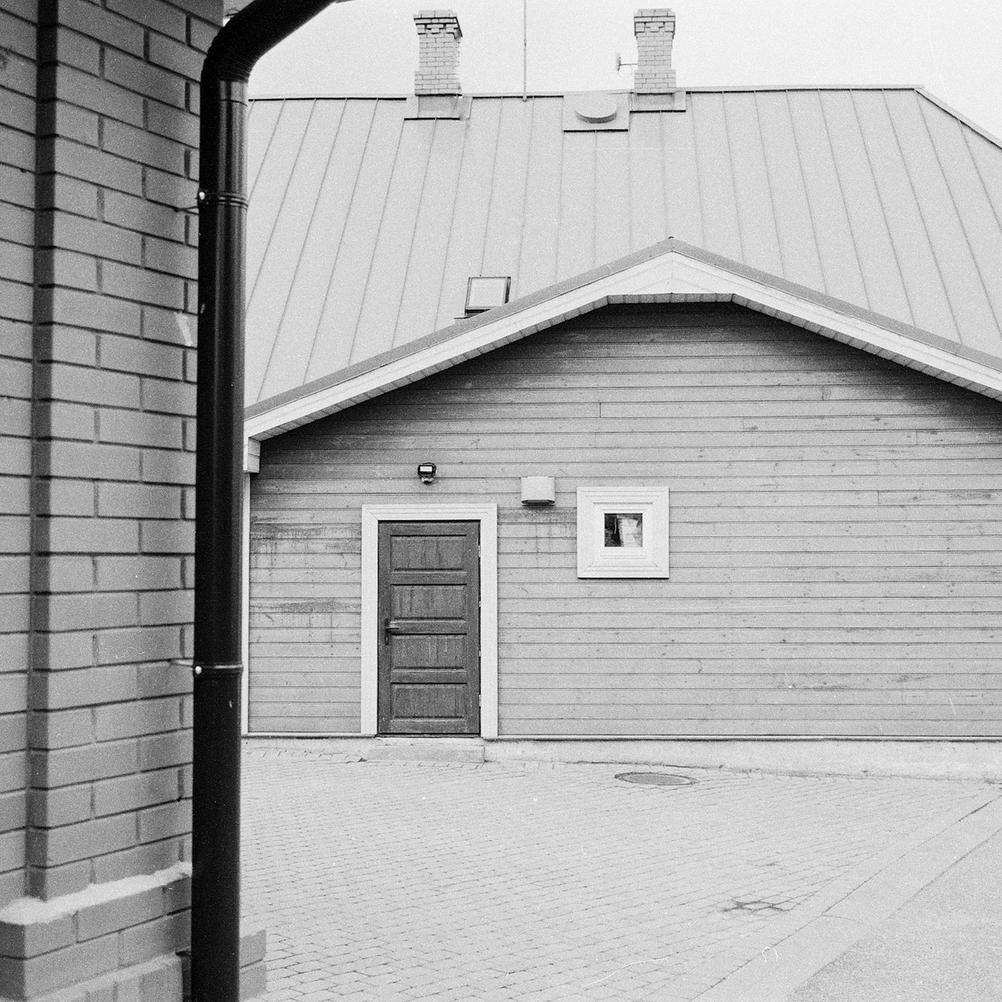
- Camera
- Leica M3
- Lens
- ZEISS Biogon T* ZM 35mm f2
- Film
- Adox IR-HR Pro 50 EI50
- Development
- Kodak HC-110; Dilution H ( 1:63 ); 9:00 minutes
- Scanner
- Reflecta ProScan 10T
Without red filter certain scenes can have a normal film like look. This reminds me of Kodak Tri-X just with a lot less grain.

- Camera
- Leica M3
- Lens
- ZEISS Biogon T* ZM 35mm f2
- Film
- Adox IR-HR Pro 50 EI50
- Development
- Kodak HC-110; Dilution H ( 1:63 ); 9:00 minutes
- Scanner
- Reflecta ProScan 10T
Even without a red filter a light skin can get a certain white glow. It's not as strong but it seems stronger than on other films.

- Camera
- Leica M3
- Lens
- ZEISS Biogon T* ZM 35mm f2
- Film
- Adox IR-HR Pro 50 EI50
- Development
- Kodak HC-110; Dilution H ( 1:63 ); 9:00 minutes
- Scanner
- Reflecta ProScan 10T
I think that this film would work really well for still life photography. When not using a red filter at least. It has the ability to enhance the available light to make it look almost magical.
And yes - I know that there's a lot of dust on this photo.
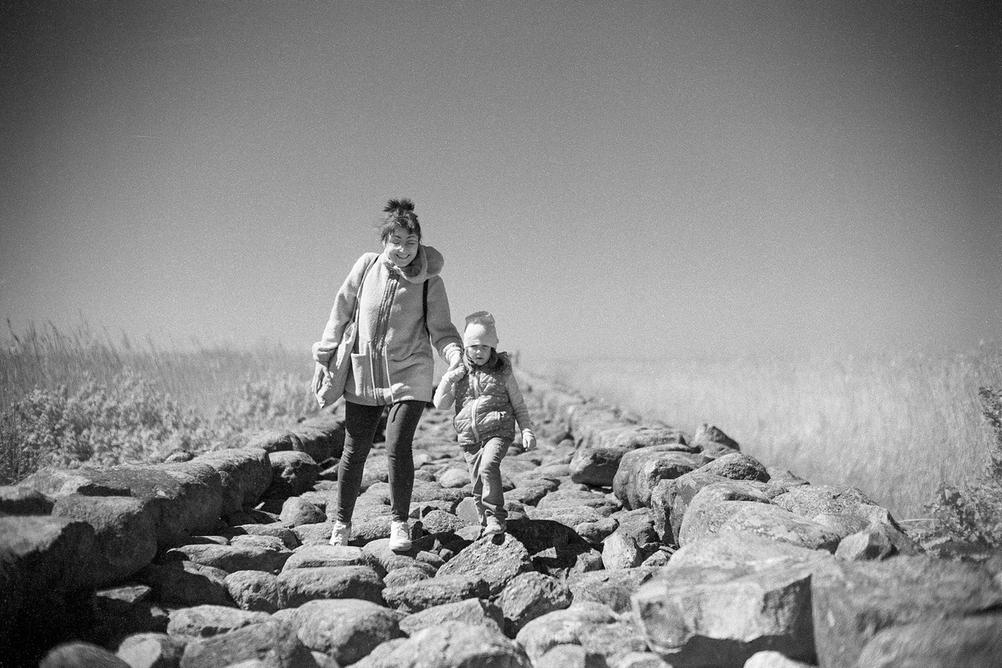
- Camera
- Leica M3
- Lens
- 7Artisans 50mm f1.1
- Film
- Adox IR-HR Pro 50 EI50
- Development
- Kodak HC-110; Dilution H ( 1:63 ); 9:00 minutes
- Scanner
- Reflecta ProScan 10T
And lastly a simple photo of my wife and daughter tackling a particularly rocky road showing that you can use this film with a red filter and take photos of everyday scenes.
Conclusions
Adox IR-HR Pro 50 is a difficult film to use but I like the results you can get with it.
It's a contrasty film - especially when shooting with a dark red filter. I like contrasty pictures but sometimes the contrast is a bit too much even for me. You have to be aware of the light in your scene. In high contrast situations I would advise metering for the highlights as they are easy to be blown out. You will likely lose shadows but you don't need every detail from there anyway. When shooting without a filter it's a bit more tame but the contrast is still there. Shooting portraits for caucasian people might not be the best idea. It's easy to blow the skin out and the strong contrast doesn't help. You can do it but expect almost pure white skin that's almost glowing. It can look good but not for every circumstance.
The film is sharp. As long as your picture-taking-medium can produce sharp images and you don't shake a lot. The grain is "small grained" but pleasantly noticeable if that makes any sense. It doesn't look as clean as a digital image - and that's a good thing!
When using a red filter the film can sometimes deliver almost infrared looking pictures which I certainly enjoy. As long as you can deal with the contrast I agree with Adox that this film handles filtration ( especially red ) really well.
I can definitely recommend the film. It's not good for an everyday film. For circumstances when you want to punch someone through the power of contrast - it's a great choice!
